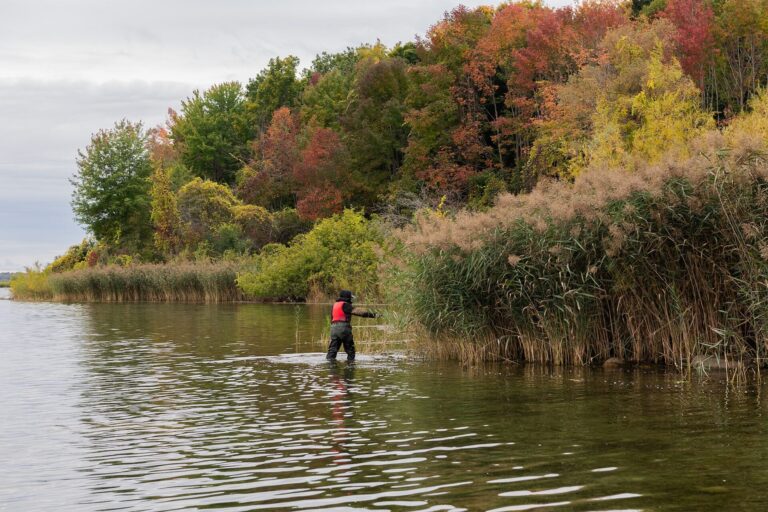Algal blooms are a frequent and wide-spread problem that is hurting the Ontario economy, threatening human and ecological health, and Ontario’s Environmental Commissioner is demanding that provincial ministries do more to protect our waters from the nutrient pollution that drives the blooms.
In her latest report, Good Choices, Bad Choices: Environmental Rights and Environmental Protection in Ontario, Environmental Commissioner Dianne Saxe provides comprehensive analysis on the state of the nutrient problem in Ontario, efforts to resolve it, and steps needed for improvements.
“The problem affects not only Lake Erie, but also parts of Lake Huron and Lake Ontario and smaller inland lakes, especially on the Canadian Shield,” the report states.
The analysis affirms what other reports have stated: Croplands are responsible for the lion’s share of nutrient runoff entering the lakes in Ontario. It added that extreme weather events are exacerbating the problem, as up to 90 per cent of phosphorus loads can be delivered during heavy rainfall events. And the province is not taking sufficient action to manage the situation.
“The Ontario government relies almost exclusively on voluntary and unevaluated programs to control phosphorus from these non-point sources. These programs do not do nearly enough,” said Saxe at a press conference. “The Ministry of Agriculture, Food and Rural Affairs (OMAFRA) and the Ministry of Environment and Climate Change need to use their financial, regulatory, and land use planning powers to slash non-point sources of phosphorus. For example, government should support farmers who deliver real, verified reductions in phosphorus run-off.”
The report offers a multi-barrier response with carrots, sticks, and more research to support them. Specifically, Saxe recommends:
- Implement financial tools that put a price on phosphorus;
- Establish a pollutant trading (water quality) market, as is being attempted in the U.S.;
- Reward agricultural practices that demonstrably reduce phosphorus loads through smart economic incentives, with an emphasis on quantifying and validating reductions;
- Ban the spreading of farm manure and fertilizer on frozen or saturated ground;
- Restrict phosphorus applications on Ontario’s golf courses and urban areas;
- An improved wetland inventory and a strategy to reverse wetland loss;
- Greater investment in challenges and solutions, such as the role of tile drains in increasing levels of bioavailable phosphorus in certain soils.
Financial tools are a key component, and the report points to July 2017 regulatory amendments conducted by the province to provide it with the powers to implement water quality trading (Ontario Water Resources Act 75.1.7). And there effective models guide the implementation of such programs. “The South Nation Conversation Authority (SNCA) is a world leader in phosphorus trading. They have done a really good job,” said Saxe. “They’re required by law to get a four-to-one benefit for the phosphorus trading; by their calculations they’ve achieved a twenty-to-one benefit, and they’ve done it by putting control with the farmers.”
Saxe sees the SNCA’s delegation to those who can directly manage the impact of non-point source phosphorus loading as the most effect, removing outside intervention where possible. “It’s farmers working with other farmers. It’s a farmer committee that decides who gets how much money, and it’s farmers who check-in on and help each other. That sounds like a really good approach to me. We’ve got twenty years of experience of it working. Why not build on that?”
For municipal inputs, the report noted that the deficit in stormwater infrastructure and maintenance should be addressed.
In addition to the issues highlighted in the report, Commissioner Saxe continues to promote public awareness and use of the Environmental Bill of Rights as a tool for open government, public engagement, and social license for government decisions.
On October 24, 2017, the Commissioner Dianne Saxe released the report to the Ontario Legislature. To read the full report visit the ECO website.









